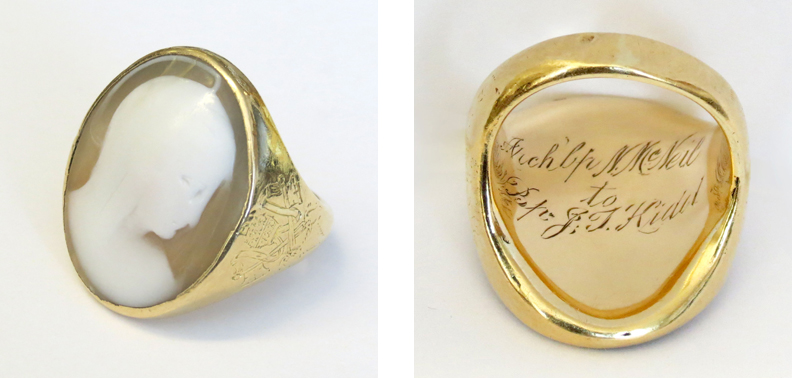 |
| A memorial card printed for the Archbishop. |
The following obituary from an unknown newspaper elegantly describes Archbishop McNeil's life:
"All of Toronto Sorrows
"Toronto is one of the most ardently Protestant cities in Canada, but the whole community profoundly regrets the death of Most Reverend Neil McNeil, the Roman Catholic archbishop. His Grace was a native of Canada and his blood was a blending of Irish and Scotch strains. His life work and his character were such as to endear him to Canadians of every creed and every racial origin.
"Neil McNeil had a humble beginning. His father was a village blacksmith in Cape Breton, a man of sterling character and giant physique who made himself a person of local consequence by sheer worth. Neil was one of eleven children and at the anvil under his father's supervision learned lessons of industry and honesty. At an early age he was destined for the church; at 28 years he already was a doctor of divinity. As a priest he ministered to lonely souls in the sparsely-settled districts of Newfoundland, trudging rocky trails with a pack on his back in storm and wintry weather. He served for a number of years as editor of a church paper and as president of a college, became bishop of St. George's, Newfoundland, in 1895, when 44 years old, and in 1910 was chosen as archbishop of Vancouver. He was doing truly splendid work on the Pacific coast and setting up many new churches, schools and convents when he was surprised to receive word from Rome of his appointment to the larger task at Toronto. He was so attracted by the opportunities he found in the west that he freely stated on his arrival here that if the choice had been his he would have remained in Vancouver.
"But he was needed in Toronto. The situation here in 1912 called for a diplomat to be in Wellesley Place, a man of broad vision and conciliatory manner who could formulate broad policies and command the respect of citizens of the Protestant faith. No other prelate possessed the required qualities in happier combination than they were to be found in the person of Archbishop McNeil. And so he came east to Ontario to earn for himself an extraordinarily large place in the affections of the people.
"The late archbishop was scholarly and versatile. He could speak Gaelic and Latin. He had a gifted pen and wrote many articles for newspapers and magazines. He was something of an authority on astronomy. If need be he could shoe a horse, repair an engine, build a road, draw plans for a building, do carpentering and act as architect and contractor. He had sound business judgment and was an efficient administrator. All of his talents were consecrated to the service of humanity and mother church.
"His Grace did not abate one jot of the proud claims of his church. But he had no love for controversy and preferred to gain support for his views by the gentleness of his spirit rather than by the logic or even the justness of his position. His heart was set on obtaining a fair proportion of the corporation tax for the primary schools of his church and many who do not belong to his faith will regret that he did not live to see the realization of that fond desire. Pomp and ceremony and vestments were all about him on occasions, but his spirit was ever distinguished by meekness and humility. His amiable, modest, almost shrinking manner was that of one who would be the servant of all. He was a natural democrat and was revered by the whole priesthood. A lovable man, one of God's good men, who never was too busy or too burdened with cares to enlist in some new enterprise for the promotion of human welfare, his passing is a great loss to the city as well as to the world-wide communion that commanded his soul's loyalty."
















